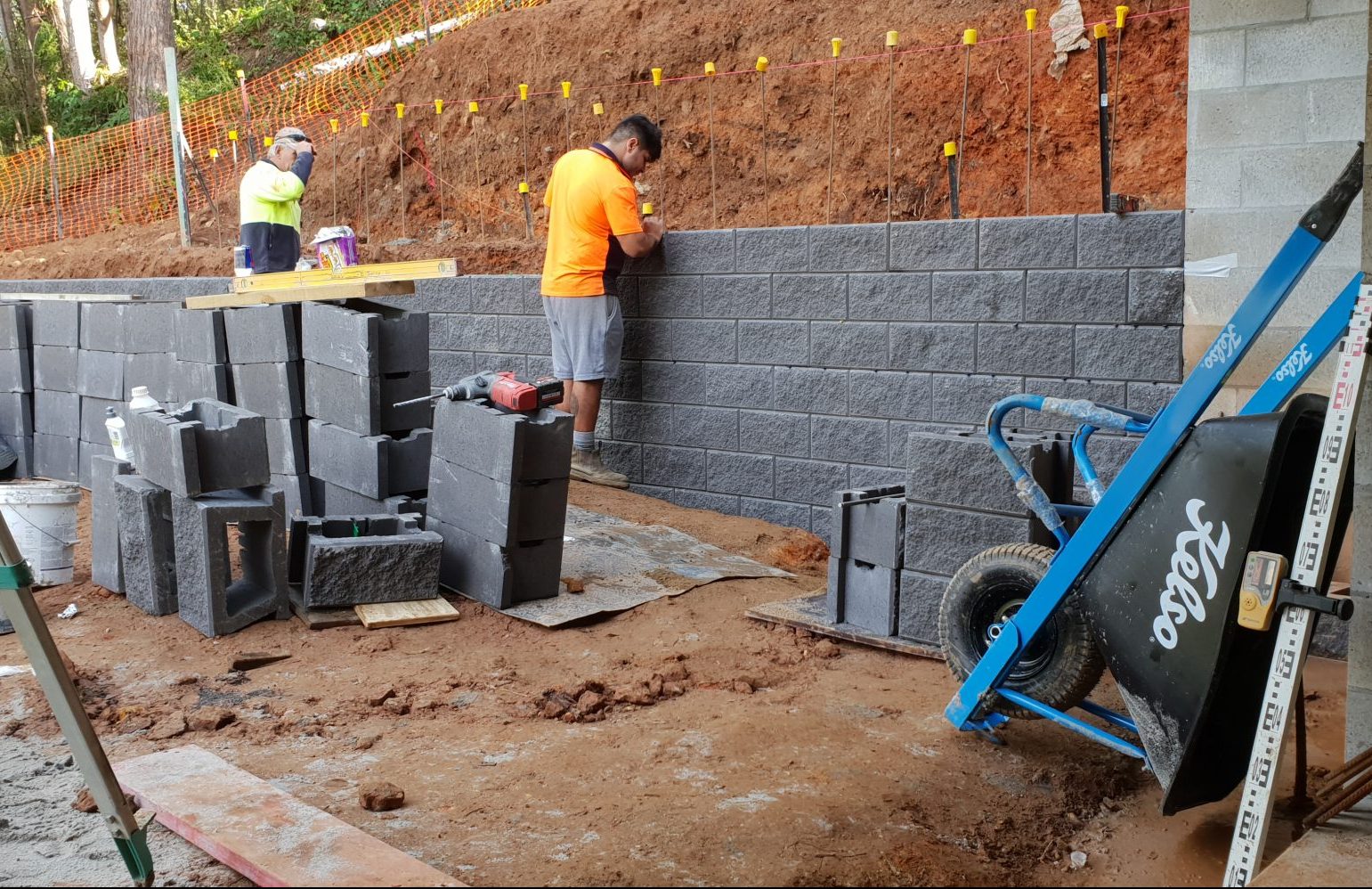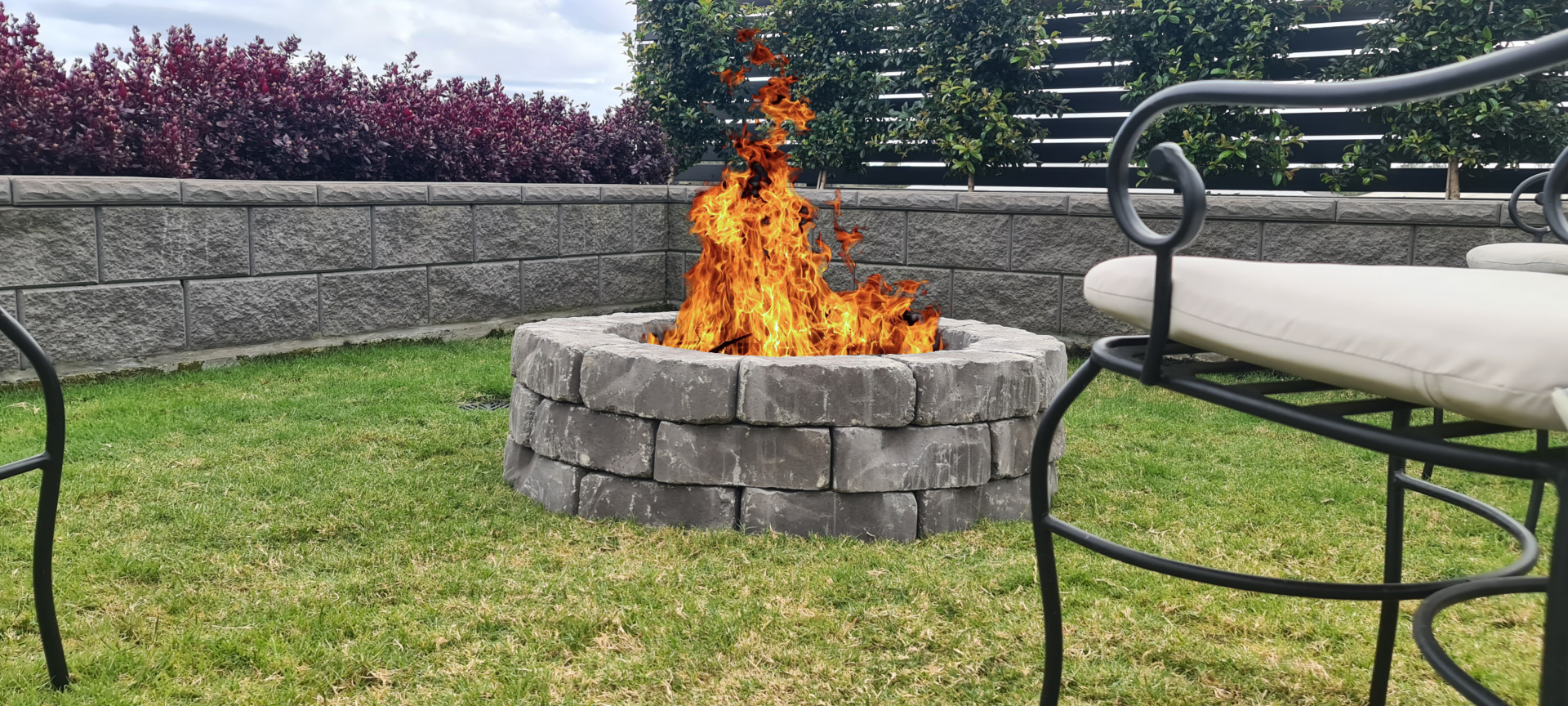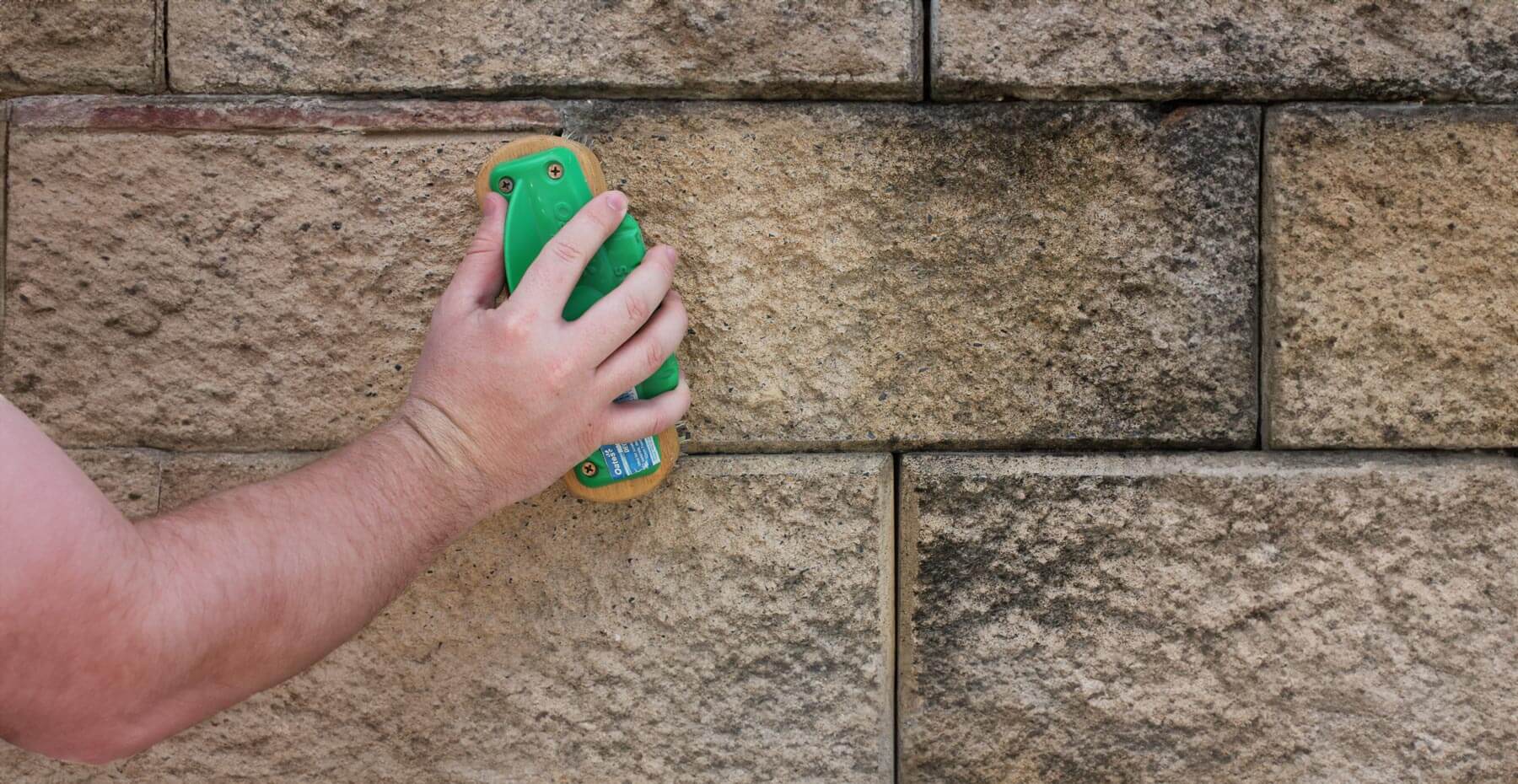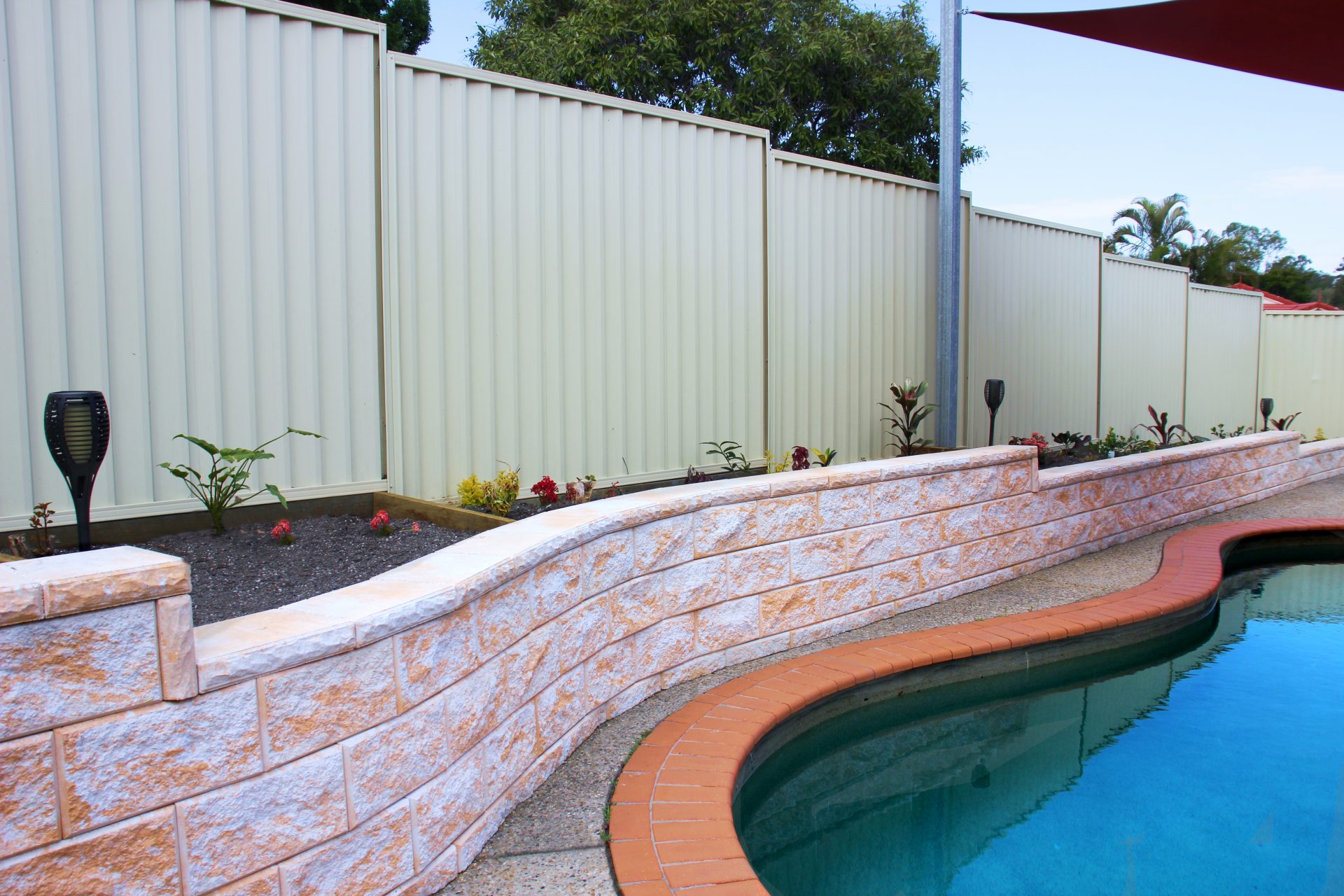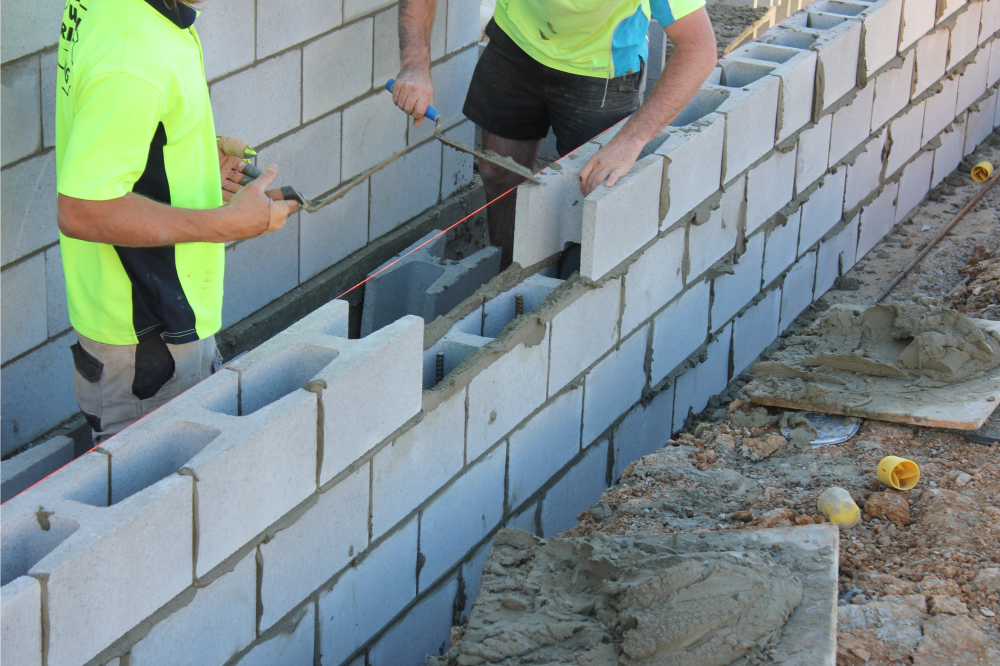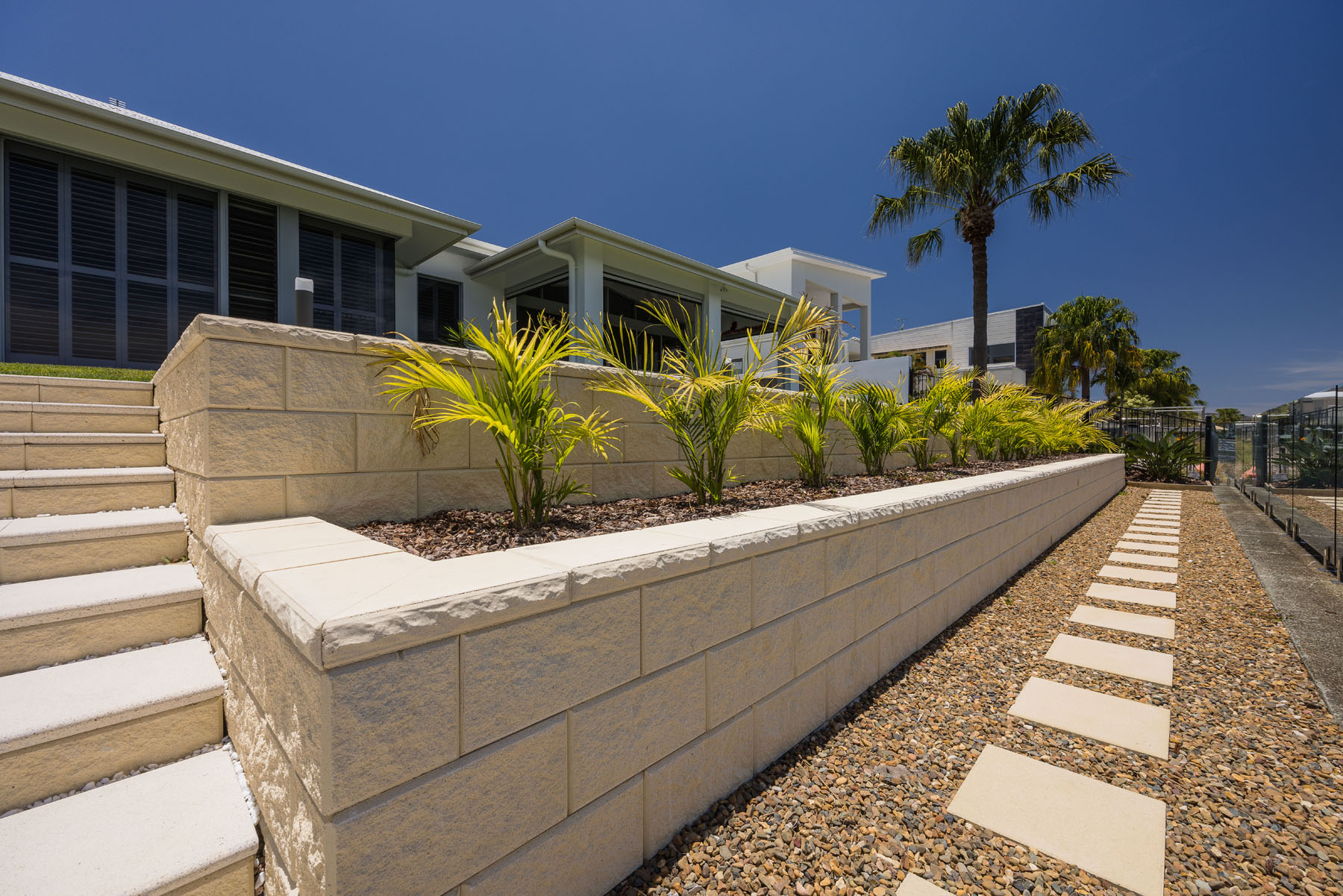Correct drainage is one of the essential elements to focus on when building a retaining wall, yet it is the last thing we think of when it comes to planning.
When drainage is insufficient or incorrectly installed, the wall will fail to deal with the build-up of water behind it causing movement in the wall, or worse, collapse. When it’s done right, the result will be a safer, longer-lasting wall! Here are the top 3 ways to prevent drainage disasters when building your retaining wall.
Install the drainage pipe correctly
After laying the first course of blocks, lay an agricultural drainage pipe with a geotextile sock (agi pipe) behind the wall on a bed of 10-20mm clean, free drainage material.
Ensure that the drainage pipe:
- Has at least a 1 in 100 fall away (1cm drop over 1m length of wall)
- Has a geotextile sock to prevent silt blocking the drainage holes.
- Has an outlet at every low point, every 20 metres and out the ends of the wall.
Backfill correctly
It is also important to have the correct drainage material. We recommend a 10-20mm clean, free drainage aggregate such as river stones or coarse crushed rock. It is imperative that the material is free from any soil, sand or other fines to ensure that water can flow freely through the drainage area and away from the back of the wall.
Use Geo Fabric
To further enhance the performance of your drainage, install geofabric between the soil and the backfill material prior to backfilling (See below image). This will act as a filter to stop any soil or silt clogging up the drainage material.
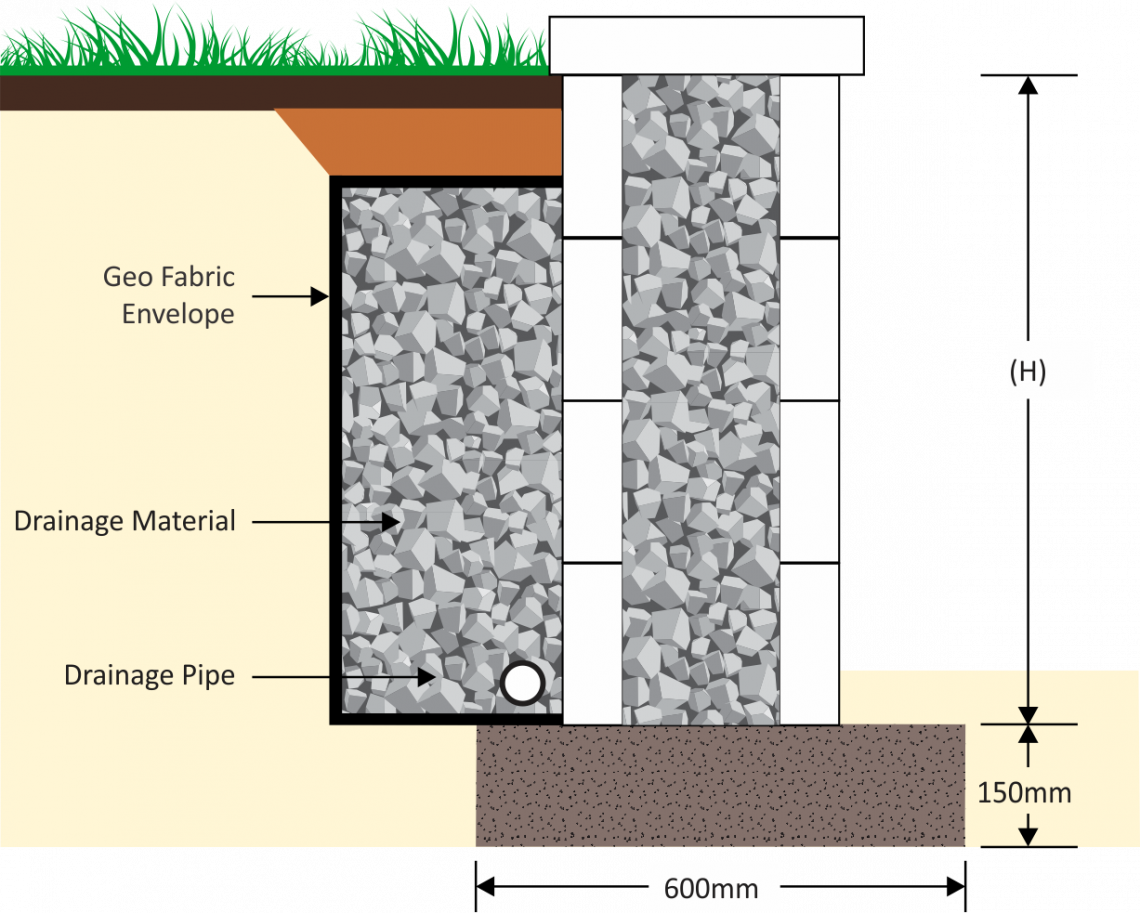
In summary, take the time to set up the drainage for a retaining wall correctly. Install the drainage pipe and back fill correctly, and use a geo fabric envelope to ensure that your retaining wall drainage system is working effectively.

